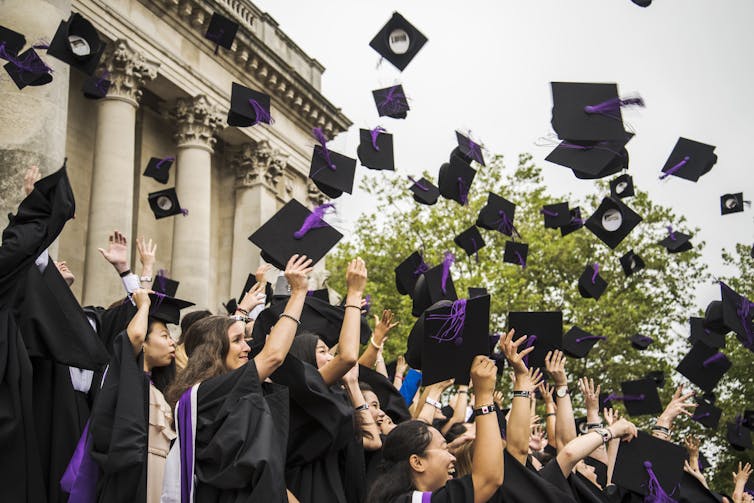
The Albanese government has announced several significant changes to student loans to start in mid-2025.
These include wiping 20% off debts, increasing the income threshold for compulsory repayments, and changing the amounts people have to repay.
As well as encouraging Australians to study, the changes aim to provide cost-of-living relief – or, as Prime Minister Anthony Albanese said on Monday:
putting more dollars in the pockets of people who feel, justifiably, that they’re getting the rough end of the pineapple.
The changes are certainly an improvement. Unfortunately, they are not as good as they should be – particularly if you have a HELP debt and a family to support.
What is the point of HELP?
My analysis of the most recently released tax statistics indicates more than 70% of those required to make a HELP repayment in 2021–22 earned between A$60,000 and A$120,000. Only 20% earned more than $120,000 and less than 10% earned less than $60,000.
The HECS (now HELP) system was conceived in the 1980s as a way to generate revenue to help the government pay for an expansion of university places.
It doesn’t matter if people do not repay all of their loans. The primary purpose is to have students who have benefited, and can afford to contribute to the cost of their education, give something back.
While fairness has always been a key plank of HECS/HELP, there are some major problems with the system. And the changes announced over the weekend continue to ignore them.

What about families?
Student loan arrangements have never taken account of other government payments and obligations such as social security, taxation rates, taxation rebates and Medicare levies.
As I have shown in this analysis, for some family types, HELP repayments combine to produce ridiculous effective tax rates.
Imagine the following scenarios for someone with a HELP debt, earning between $60,000 and $100,000 and who had a pay increase in this income range.
In 2022-23, if you were single with no kids, the average effective tax rate on the extra earnings was 51%.
If you were single with two kids aged four and seven, the average effective tax rate on the extra earnings was 77%. If those children were ten and 13, it was 73%.
The situation is similar in a couple family with two children where only one parent is able to work. The working parent has little incentive to increase their earned income and this won’t change much under the new proposals.
The reason people in these situations keep so little of their extra earnings is because as family incomes increase, they lose family tax benefits, they pay more tax and their Medicare levy increases.
There is not enough attention paid to how all these arrangements interact and how they affect people overall.
We need to know many families are paying HELP
The government’s plan to increase the HELP repayment threshold to those with an annual income of $67,000 is a welcome improvement. The system was never intended to take money off people with virtually no capacity to pay.
The government’s plan to simplify the repayment arrangements is also a positive step. The current system has 18 different repayment rates applied to total income, which means people are repeatedly going backwards when they earn extra money. The new plan to only calculate repayments on dollars over the threshold (the marginal rate approach) stops this from happening.
But the system continues to disregard how people with HELP debts can be in different family circumstances.
In my work on HELP, I often get asked how many HELP debtors have dependent children. The answer is I do not know and neither does the government.
None of the data which the government releases provides any information on family circumstances, despite the fact around $4.6 billion was collected from 1.2 million individuals in 2021-22 (the most recent year we have for this data).
This is vital information to make good policy and fair decisions but we do not have it.
Could these problems be fixed?
We could reduce many of the worst impacts here with a single marginal rate for calculating HELP repayments and thresholds which varied depending on the number of children and partner’s income.
The repayment rate and thresholds could be adjusted to deliver an acceptable repayment level for individuals and sufficient revenue for government to support university funding.
There is no point in pretending the current system is one in which people have an insignificant level of debt that is repaid quickly after university.
Typical students today are finishing their degrees owing around $60,000 and many have debts much larger than this. They will continue to make repayments well into their thirties when they have families.
It is time we had a system that truly recognised this.
Mark Warburton is a member of the Australian Labor Party and occasional provider of consultancy services to groups such as Universities Australia and the Australian Technology Network.
This article was originally published on The Conversation. Read the original article.







